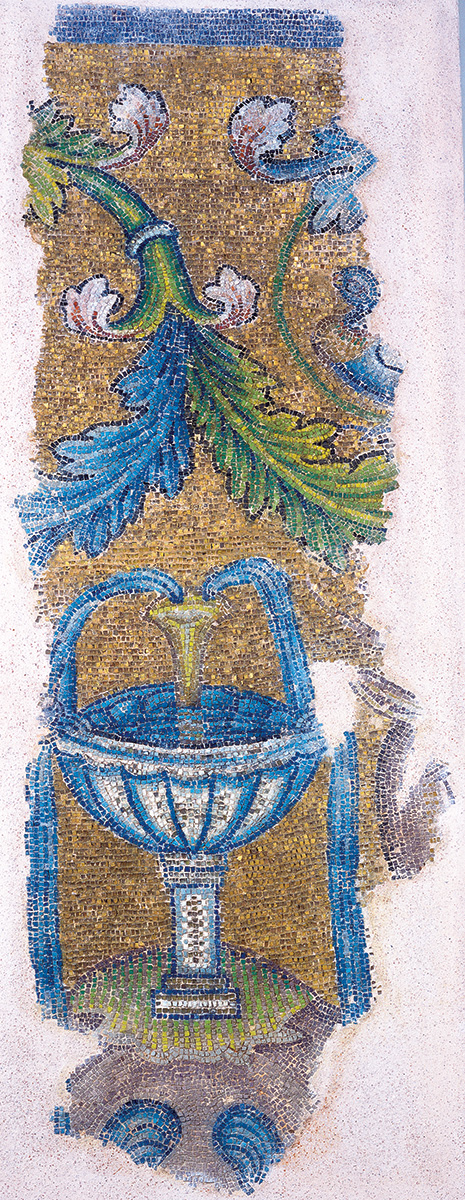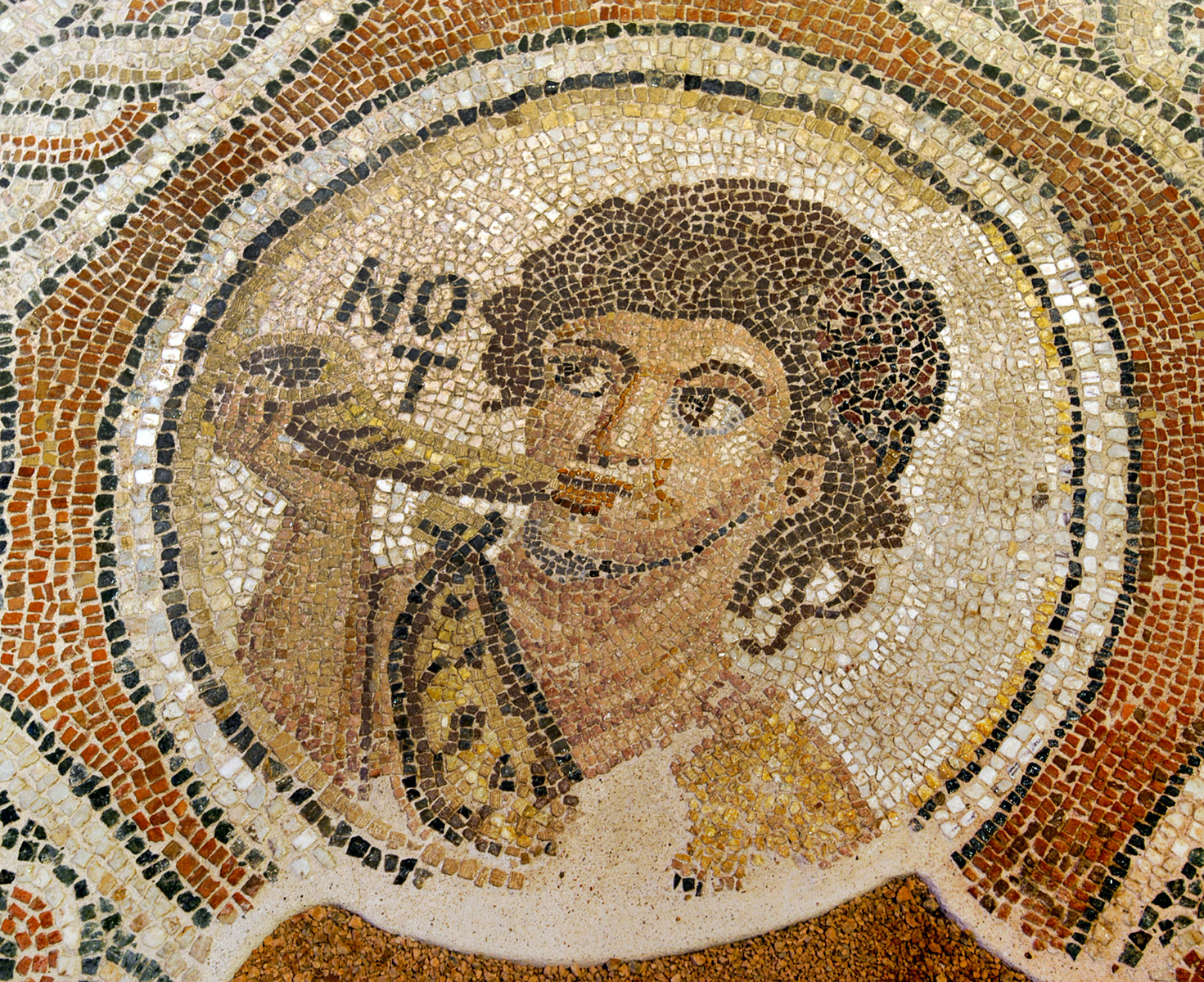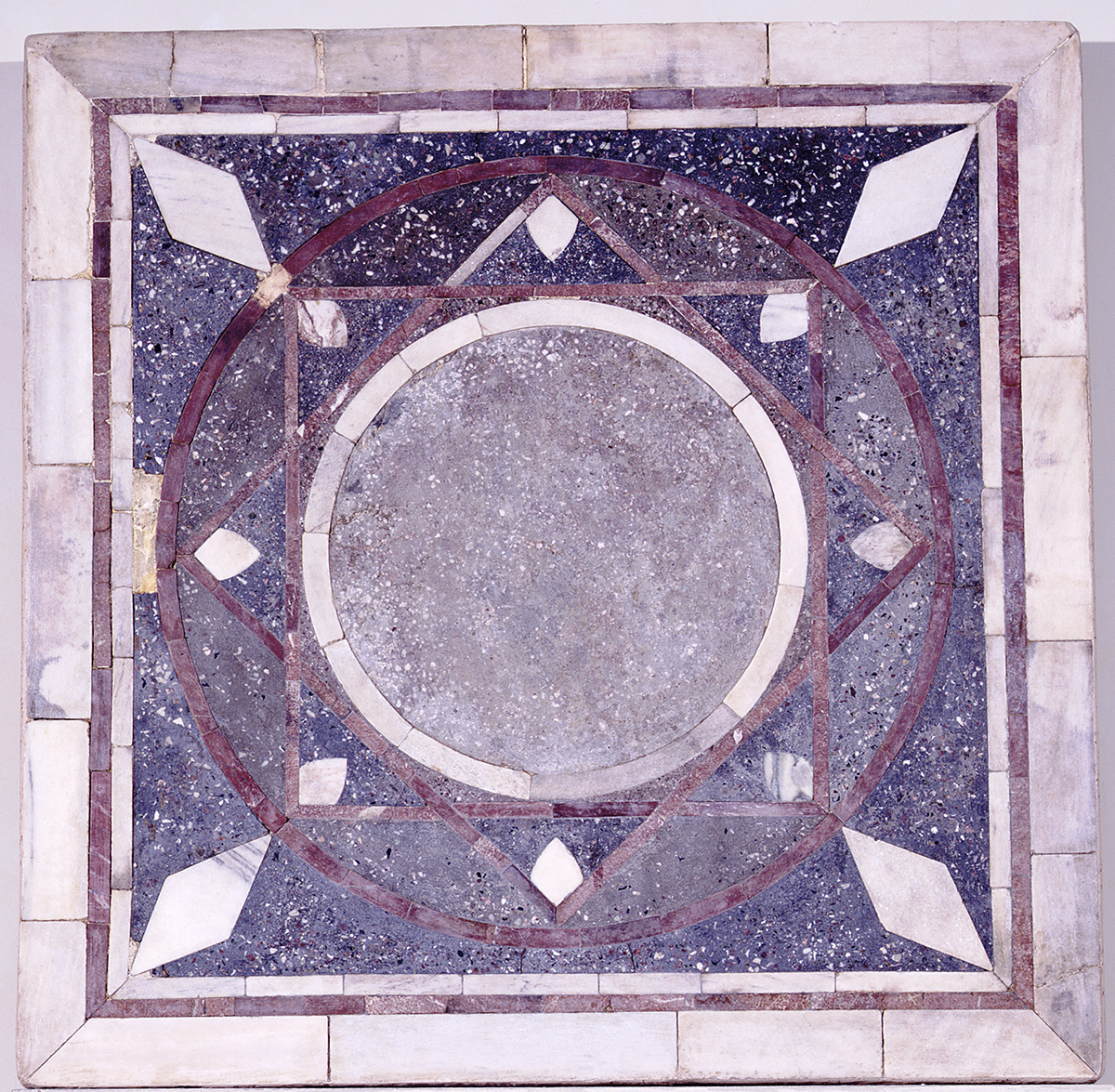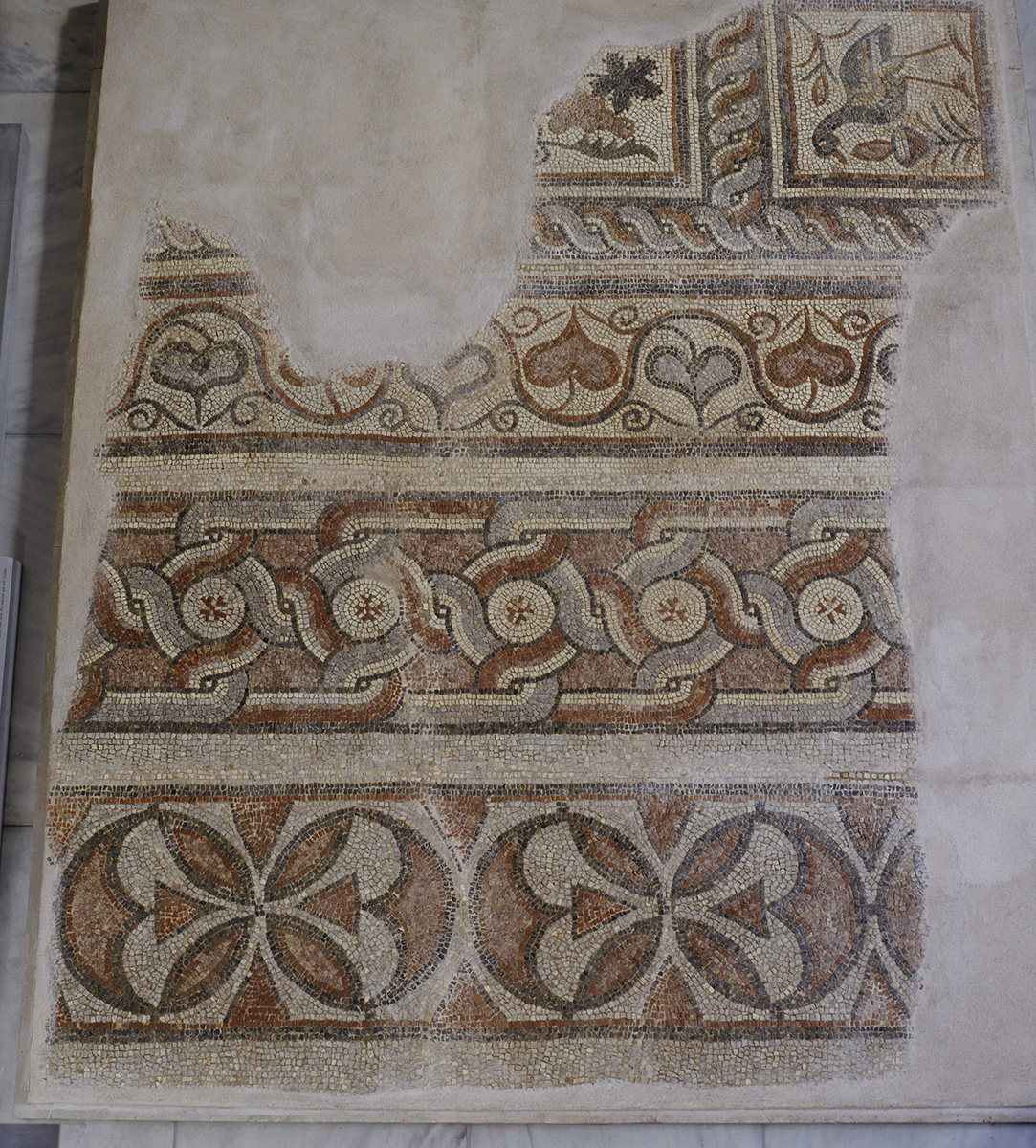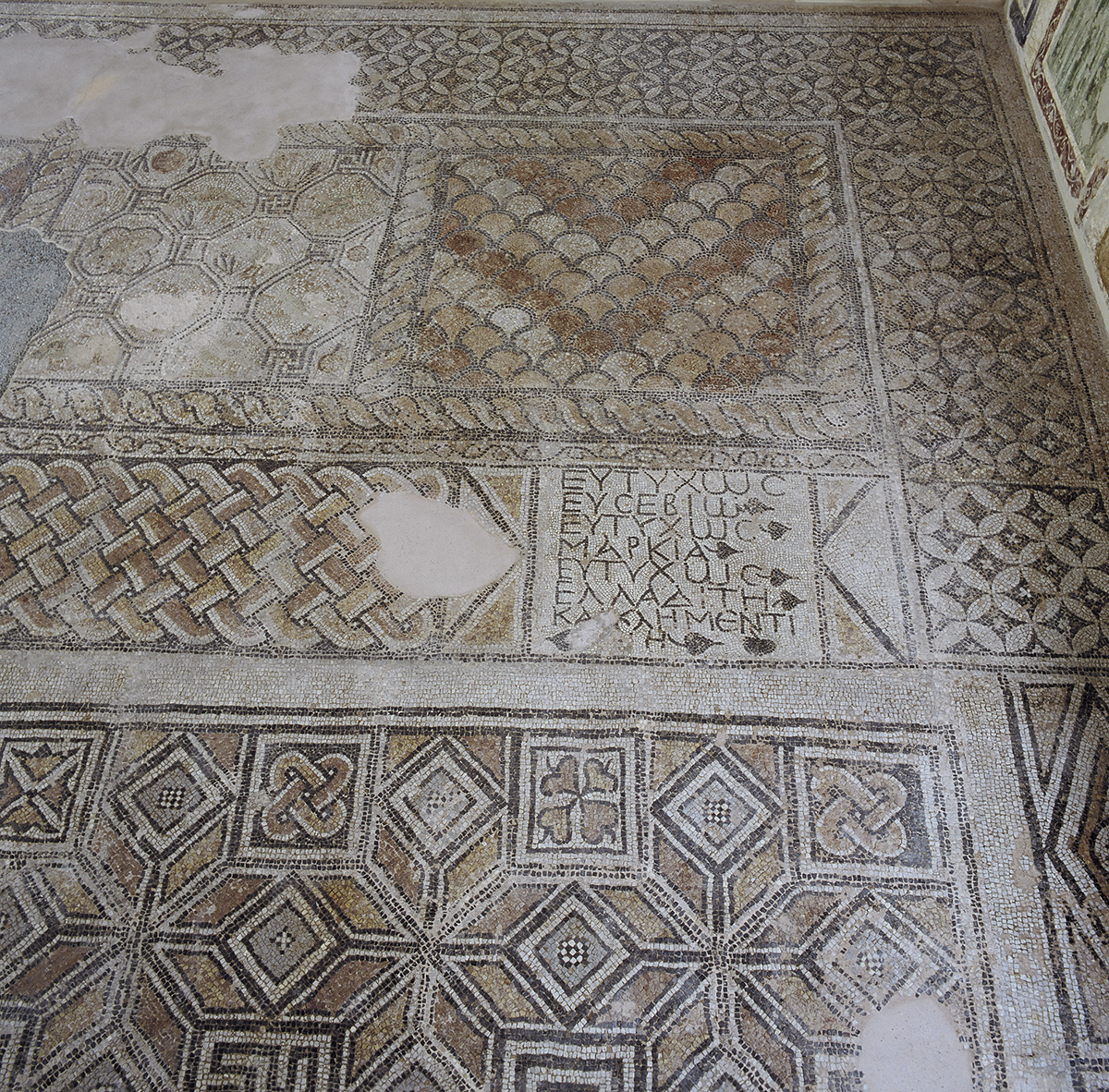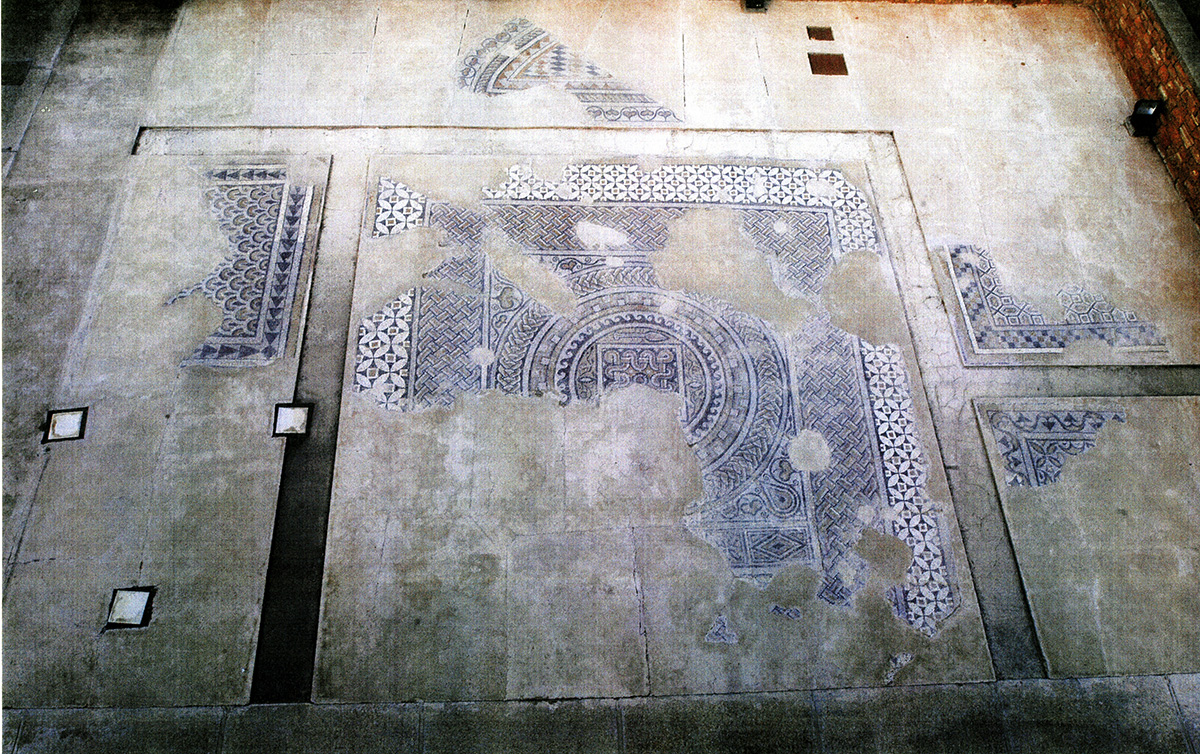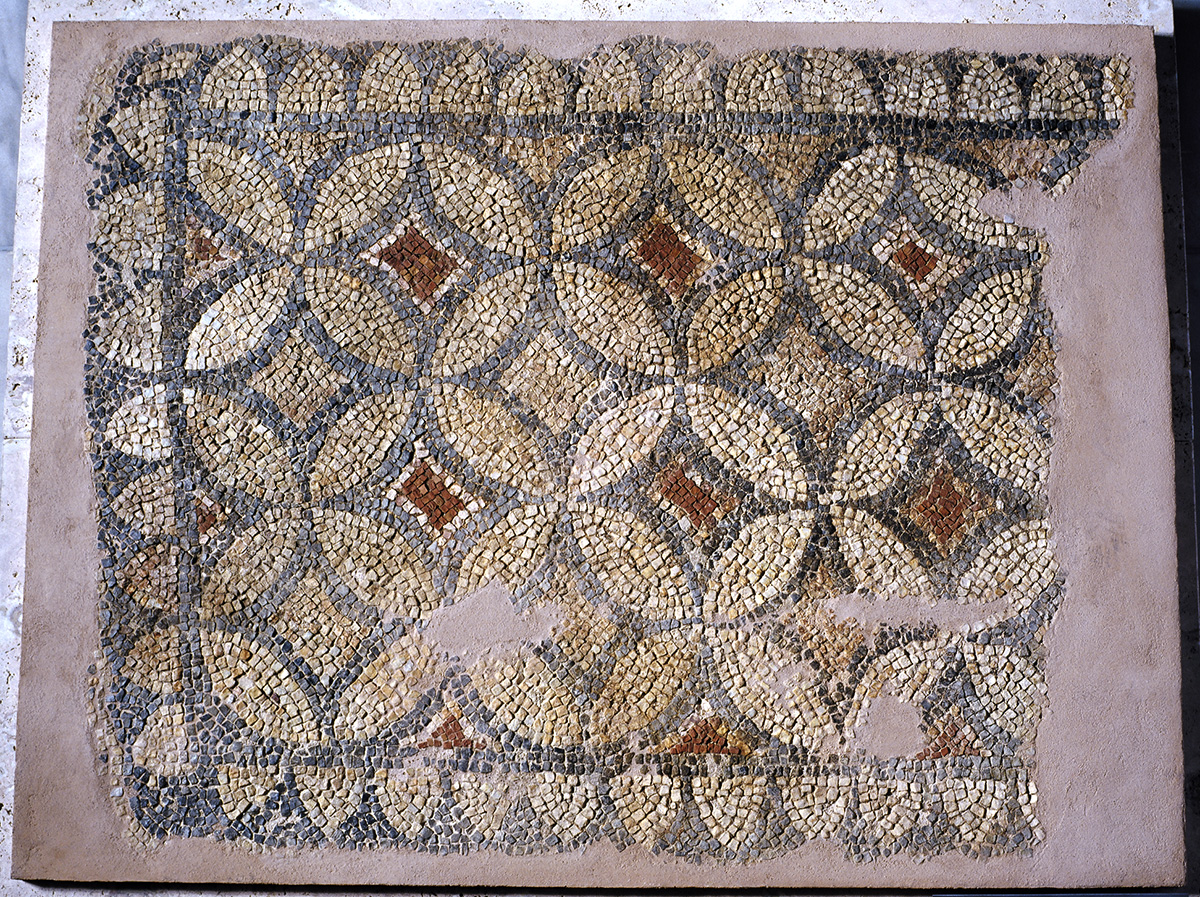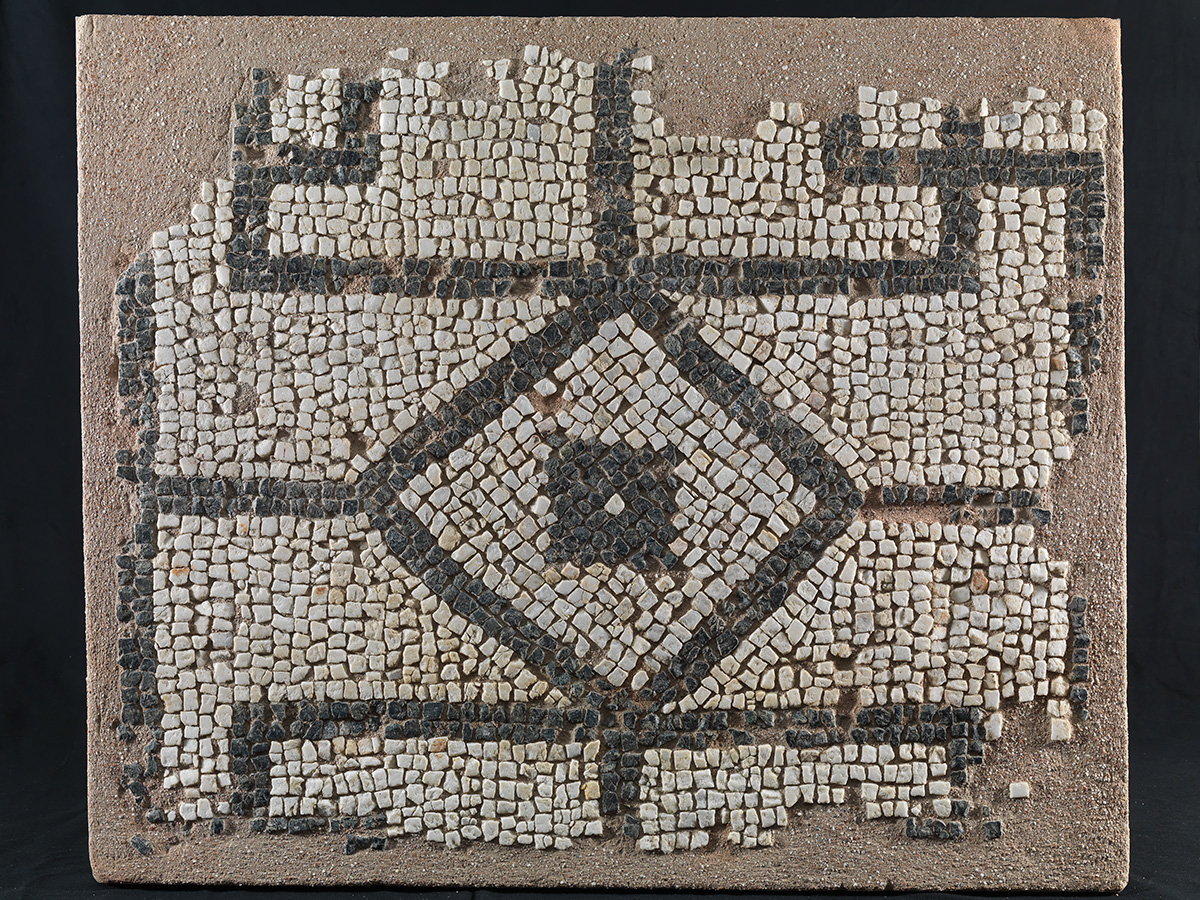Mosaics
The collection of mosaics includes 70 groups of detached mosaics that adorned the walls and floors of public buildings, churches and residencies. Most of them were found in salvage excavations of Thessaloniki, dating from the 4th to the 7th century.
The oldest set (early 4th cent.) was found in the Galerian palatial complex of Thessaloniki. These floors bear monochrome, geometric decoration, showing that the Roman, Western tradition of black and white mosaic continues this period in the city.
During the early Christian period (4th-7th century) Thessaloniki becomes an artistic center where great workshops of mosaicists operate, as is evidenced by the wonderful mosaics of the Rotunda. Luxurious Christian churches are built on the sites of older Roman public bathhouses, such as the basilicas of Acheiropoietos and Agios Dimitrios, which are decorated with mosaics of high artistic quality.
The collection of the museum comprises fragments of the mural decoration of Acheiropoietos, with mosaics made of glass tesserae covered with gold leaf, rendering birds, fountains and floral decoration, symbols of paradise. A special section of the collection are the important mosaics of St. Demetrius depicting the Saint and Dedications of Children, and the marble opera sectilia inlays, small assembled pieces of marble forming geometrical patterns.
The collection also includes mosaic floors of early Christian churches decorated with floral and animal motifs, like ivy leaves, deer and peacocks. These themes are combined with geometric motives like guilloches and bands, usually embedded in panels.
An important part of the collection include triklinia floors, i.e. formal reception rooms, of rich houses of Thessaloniki (fig. 1). The mosaics of this group date from the 4th to the 6th century. They consist of simple, undecorated crude mosaics, but also of fine mosaics with rich, geometric and floral decoration in which the human form is relatively rare (Fig. 2).
Mosaics of the collection are exhibited in galleries 1, 2, 3, 11 of the permanent exhibition and in the courtyard of the educational programs of the Museum of Byzantine Culture.



